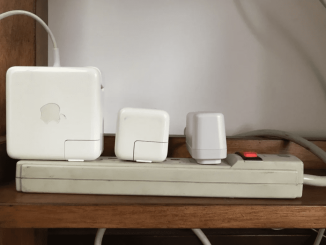A female mechanic has gone to lengths to ensure women and non-binary people feel comfortable and at ease whenever they have car troubles. The 25-year-old used to be “anxious” when she needed assistance, and male-dominated repair shops were the only thing available, so she started her own business.

\
Zoe Cog, from Manchester, UK, created a safe space for women to look for car assistance, a repair shop she called AutoCog. Although she started out as a receptionist in the industry, she became a mechanic herself. It was then she realized women constantly felt anxious about entering male-dominated repair shops, fearing discrimination or belittling.
“I’ve been the girl on the other end, worried about walking into places like garages and feeling anxious, and although it’s never easy, I like to think I’m an approachable, friendly female who has created a place where you can walk in and feel at ease, regardless of your gender,” she said in an interview.
“I get pleasure out of taking the pressure off the girls and can give as good of a service as any male-owned garage, but also build trust with the people I’m working with,” she added.

The response to Autocog surpassed all expectations, according to her. “Honestly, the response to my garage has been phenomenal and beyond anything I’d ever expected. It’s been an incredible rollercoaster. I’ve had so much support and positive feedback from not just women but also some incredible words from men,” she revealed.
She continued, mentioning how some feedback also proved why a female-owned repair shop was much needed. “Although some of the comments have proved why such a place was needed for us women — that’s for sure. I’ve had people question my ability to do the job as a woman, but I don’t let it get to me,” she said.
Many women are all about fighting gender stereotypes, and inspiring stories come up every day online. An excellent example is Edine, a young woman who stopped removing facial hair and shared how it has changed her life with the world.
Miss Nepal Is Facing “Cruel” Reactions for Her Participation in Miss Universe 2023
Over the 71-year history of Miss Universe, this marks the very first participation of a plus-sized contestant. The 22-year-old Miss Nepal has etched her name in history by confidently showcasing her stunning physique. While many people rallied behind her, praising her beauty, a significant portion of the global audience also levied criticism. She candidly addressed these comments, shedding light on her experiences.
She glowed with confidence.

Jane Dipika Garrett expressed her pleasant surprise at the extent of her progress in the competition that took place in November 2023. Having harbored dreams of becoming a model, she confronted past struggles with low self-esteem. The overwhelmingly positive response she received during the competition served as a validating experience, and solidified her newfound confidence in embracing her own identity.

Garrett noted that she “did not expect to get that much applause on the stage.” She went on to explain that she “wasn’t expecting anything” and was only participating to represent her country and “to represent women all over the world.”
Opinions were divided.

Despite being praised by many around the world for her gorgeous looks, the 22-year-old said that she had also faced harsh criticism from many people. She admitted that some incoming messages were less than positive, reaching the point of being described as “cruel.”
Jane revealed, “I see things like, ’Oh, she’s a whale,’ or ’Why don’t you go to the gym?’ And things like that.” She continued, “It’s like they don’t even know my story. They don’t even know what I’m going through.”
She’s not letting her struggles stop her dreams.

The beauty contestant clarified that she grapples with a condition known as polycystic ovarian syndrome (PCOS). This medical condition involves the overproduction of androgens by the ovaries, surpassing the typical levels found in women. PCOS manifests with various effects, including weight gain, menstrual irregularities, acne, and excess hair growth.

She noted that recently she had gained a lot of weight due to her condition, stating, ’’that’s also really taken a toll on my mental health and my self-esteem because I thought that I wasn’t good enough or that I wasn’t beautiful enough.’’
Nevertheless, Garrett underwent a journey of cultivating a positive mindset and finding comfort in her own skin. Observing her radiant confidence on stage, it’s evident that she has successfully achieved this self-acceptance journey.
We concur that Miss Nepal looks absolutely stunning, and we consider it a significant stride for the Miss Universe competition to embrace and celebrate the beauty and diversity of women’s bodies in all shapes and sizes. To delve further into the realm of Miss Universe and discover how previous winners are looking today, we invite you to explore this article.
Preview photo credit Miss Universe / YouTube, MARVIN RECINOS/AFP/East News



Leave a Reply